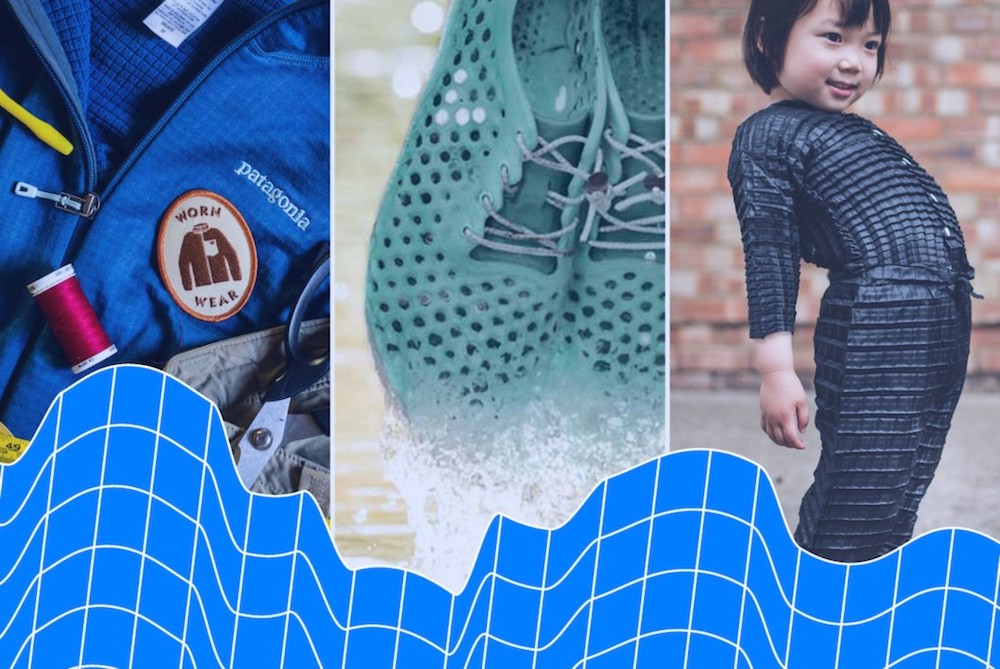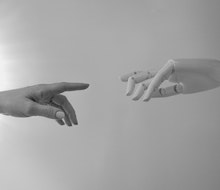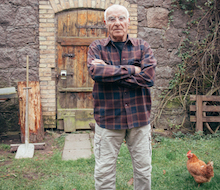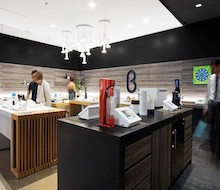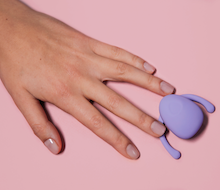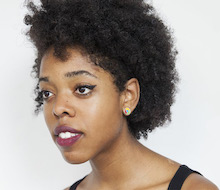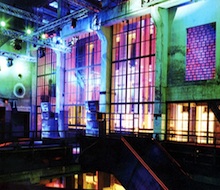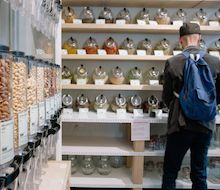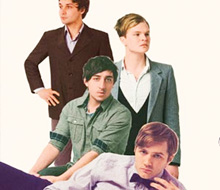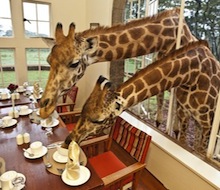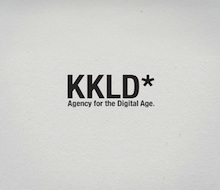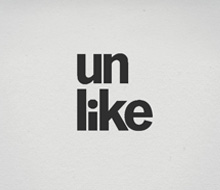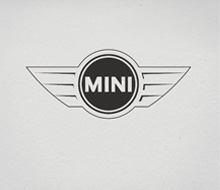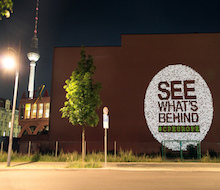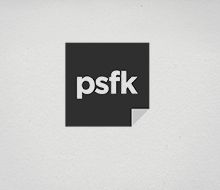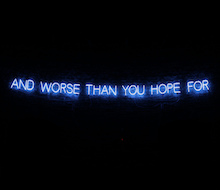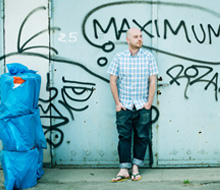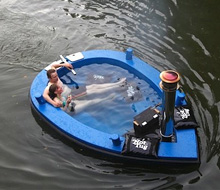To get some crystal ball predictions for what the future of fashion holds for PSFK’s Fashion Debrief, we turned to a handful of experts
PSFK’s Roundtable series takes its inspiration from the traditional roundtable: bringing together industry insiders to share their insights on emerging and compelling trends in an idea-friendly manner. PSFK guides the discussion and our roundtable helps guide the future.
In some ways, the fashion world has gone completely full circle in a matter of two centuries. Think about it. People have gone from spinning wool from their sheep out back to getting their Jane Austen-esque gowns tailored by their neighborhood seamstress to buying one-size-fits-all flapper dresses off shiny department store racks to snagging Nike kicks with the click of a finger on Instagram to making their own clothing all over again—but this time with 3-D printing.
For an industry that is ever in state of flux, its one constant is change. The carbon and societal footprint involved to make every runway or store footprint possible is tremendous, considering the amount of natural and human resources used in extraction, farming, harvesting, processing, manufacturing and shipping.
Now we’re finally at a point in time where we have the technology to address these issues and turn the system on its head. We need to start asking questions, like: What could the function of fashion design be in the 21st century? How can we produce fashion that actually fulfills human beings’ fundamental needs? How can we make products from renewable materials? How can we redesign the industry so it serves everyone in the supply chain—from the manufacturers to the designers?
To get some crystal ball predictions for what the future of fashion holds for PSFK’s Fashion Debrief, we turned to a handful of experts, who include:
Timo Rissanen | Assistant Professor of Fashion Design and Sustainability at Parsons School of Design—As an Australian-trained Finnish fashion designer, his design practice is grounded in creative approaches to pattern cutting. His research centers on fashion and sustainability, where fashion is integral to the everyday experience of living.
Madison Maxey | Founder and Technical Lead at LOOMIA where she designs technology and processes for seamless integration of e-textiles into everyday objects. As the 2013 Thiel Fellow and Forbes 30 under 30 winner, she has held residencies and done creative work at Autodesk, Pratt’s BF+DA, The School of Visual Arts and Google Creative Labs. With advanced 3D modeling and 3D printing skills, 3D modeling / CAD, JavaScript, Arduino and physical computing, she has built and designed CNC machines, nitinol / high current circuits and a large, textile-based cap touch matri.
Jessica Graves | Founder & Data Scientist at SEFLEURIA. She has spent time as a researcher for Fortune 500 fashion companies, startups & apps in retail & machine learning. As lead analyst at Alvanon, she wrote statistical software to recommend sizes for brands like C&A Europe, Burberry, Fast Retail, VF Corp, G-Star, JCPenney, Marks & Spencer, Woolworths, Arc’Teryx, Reebok. Independently, she worked with brands to teach them what data could do for their product development roadmap, both apparel & software. Ralph Lauren brought her onto a data science team of two, building models for digital marketing optimization & modernizing the data infrastructure.
How would you describe the fashion landscape today in terms of the biggest ideas and shifts that are taking place? How do you think fashion is evolving?
Timo Rissanen | Parsons School of Design Assistant Professor of Fashion Design and Sustainability
I think that the thing that is perhaps missing a lot of the time is that we’re not designing clothes intentionally to fulfill a variety of needs that people have. A lot of the time brands are primarily designing and producing clothing from the perspective of what’s going to sell. Of course that is important because a company needs to survive, but I do think that there’s an opportunity for a lot more. Companies could be more successful if they actually thought to identify the needs that people use clothing to fulfill. Ffora is company founded by a Parsons graduate, Lucy Jones. For the last three years of her studies, her research focused on designing clothing for people with disabilities where the clothing is still just as beautiful as clothing designed for anyone else.
There are countless opportunities when you actually start to hone in on the different niche markets. Technology can also help when it comes to finding out what it is that people need. We need to start asking questions like, “What could be the functions of fashion design in the 21st century?” Historically I would argue that the primary function was to produce goods in order to create profit which is a bit of a missed opportunity
Madison Maxey | LOOMIA Founder & Technical Lead
I started out in the fashion industry but now I enable technology for textile products, whether that’s fashion , functional apparel, industrial, automotive or whatever it may be. What I’ve always loved about the fashion industry is that it’s a rapidly creative workplace. A lot of very visual, collaborative and creative work gets done, but people must force their art to get out there on a much faster timeline that wouldn’t work in tech, because it follows a really different calendar and a different work style.
That said, the fashion industry is starting to see that there’s a passion and stability in technology that isn’t always present in the fashion industry, so they’re starting to latch onto these technologies more to learn how their products can last longer and not need to work in such a frantic way sometimes.
I think that the fashion industry is interested in the stability that the tech industry provides, and that the tech industry could learn a lot from the highly visual, collaborative and hands-on way that the fashion industry operates. They’re starting to cross-pollinate in terms of workflow and core materials that they use.
Jessica Graves | SEFLEURIA Founder & Data Scientist
I would definitely say that the fashion industry is, to some extent, waste-embodied. I’m not sure how much longer we can continue throwing non-renewable natural resources at this industry. For environmental and financial reasons, and because consumers are so much more demanding, we’re finally starting to change. We’re finally at a point where people are really starting to get serious about AI and machine learning and starting to figure out how can apply this to fashion.
For example, one of the most exciting things now is that we can start manufacturing fashion in a more automated way, which means we have less waste problems. We have labor problems. We have been producing too much stuff because we have inaccurate estimates about how much stuff we need. We have bad marketing for not reaching people with the products that we have. A lot of these questions, from my perspective, are going to be answered somewhat with data, but also with what AI and deep learning is doing by being able to produce fashion with less people. That’s super exciting to me.
What are the biggest challenges and opportunities the industry is facing?
Timo Rissanen | Parsons School of Design Assistant Professor of Fashion Design and Sustainability
One almost immediate outcome for us was that, as an educational institution, we hadn’t really framed fashion design as user centered design. Now, almost four years later, it’s quite ordinary for us to set up design briefs for our students where they have to do user research. That was perhaps one of the most fundamental findings—that fashion can and probably should do a lot more user research alongside the more traditional market research that it has done for years.
For example, asking questions like: what is it that brings joy to people when they wear clothing? I remember some stories where clothing didn’t only act as a facilitator for relationships between complete strangers, but also connect relationships within families. . We found four women spanning three generations in one family who all shared the same dress. One woman would have it at a time. Once they felt that they’d got enough wear out of it, they would mail it to the next woman, and the next woman, and so forth. Clothing does have an amazing capacity or potential to facilitate relationships between people.
My research now is more centered on building on local wisdom, so I’m looking at the work of a Chilean economist, Manfred Max-Neef, who developed his idea of fundamental human needs 30 years ago. I do think that his work could be used more than it has, not just in fashion design but in design across the board.There’s nine fundamental human needs and they are universal across humanity, regardless of culture, time and social status. However, how these needs are are fulfilled varies. The question that I’m interested in the most is: how can fashion and fashion design better and more intentionally fulfill those nine fundamental human needs? A single garment cannot fulfill all nine needs at the same time and it doesn’t need to. However, I do think that there’s a huge opportunity in the fashion to start asking questions about how might we, as an industry and as a system, work more effectively to fulfill those needs instead of using consumption as a proxy to fulfill those needs.
For example, one of the fundamental human needs is creation—the need to create. Customizing or repairing existing clothes or making your own clothes might be a more effective way of fulfilling that need.
Also, there’s an interesting book that came out maybe two months ago called, “Folk Fashion” by Amy Twigger Holroyd in the UK. It’s based on her PhD research which focused on making and altering clothes at home, specifically knitwear where you can actually unravel the garment and reknit it into a completely new one. It was really rich insight into how people get this immense satisfaction out of fashion not just through shopping for more stuff but actually being actively engaged with fashion with their very own hands.
On the one hand, technology is evolving at a rapid pace which creates some challenges but also a lot of opportunity. I think fashion is one field where change has always been inherent and has a more resilient capability in the face of change. With climate change alone, it’s very difficult to predict what the next 50 or 100 years might look like, but I think fashion has a capacity to embrace change and alleviate some of the anxiety.
Madison Maxey | LOOMIA Founder & Technical Lead
So much of fashion is really about presentation. A lot of these things haven’t been presented very well. There are some tech functionalities that can be replaced with things that are in your clothing. Billie Whitehouse’s Navigate Jacket was a great idea for example, because I use my phone for Google Maps all the time. If my clothing can tell me where to go, then I don’t have to look down at it while I’m moving. There are other things that your phone just can’t do for you. Wearable tech isn’t just about being “connected to the internet”, either. When it comes to being comfortable or improving posture, your phone can’t do that for you.
Let’s say you have a posture-sensing jacket. I don’t think you should have to look down at your phone to know if you have good posture or not. There are haptic feedback waves that can tell you if you’re sitting upright or not. Rather than thinking of phones vs. wearable tech, the two can live in harmony. The phone does one thing. The garment does something else, and they don’t need to overlap.
If navigating a loved one is mostly what you’re using your phone for, then that function can be replaced with haptic feedback in a garment. I think that that’s kind of the problem—that some of wearable tech solutions are over-engineered and don’t fulfill the basic things that people want. They’re generally pretty simple, “I want to know where somebody I love is. I want them to know when they’re somewhere that they shouldn’t be.” Maybe his daughter would get a little buzz or something and would think, “Daddy knows I’m here. I know I should go home.”
At the end of the day, people want to be comfortable and people want to be safe. I feel like we can do really simple things to help with some of these issues, but obviously they’re not as exciting as a jacket that connects to your phone and house. There’s this middle ground subtle functionality that hopefully won’t be gimmicky, and can truly be useful for people.
Jessica Graves | SEFLEURIA Founder & Data Scientist
Making better guesses about how much of something should exist. Fashion’s always going to be a creative process. There’s always going to be, to some extent, a brand leader creating something or a creative director being a demigod of defining culture for us. However, to some extent, data’s going to be really important for establishing depth—if I produce this thing, how much should I produce?
It’s going to be great for proposing new designs, too. Stitch Fix is a great example of this, because they’ve trained AI to look at the market and then add and subtract things that should exist. There’s also Thread Genius in New York that is experimenting with using data to make search better. Not only can you search with a picture and then discover everything that matches in that picture, but you can say, “Here’s a T-shirt” or “Here’s a silhouette,” and “green”, and then get the green version of that shirt.
We’re getting to a point where you can get really specific with search and AI’s starting to understand with seeing. I think the role in fashion’s going to be to parse through all the different options we have, and then help people make better guesses about how deep they should go with their inventory. Then, once they get to the marketing part, helping to finding the target market, not by typing in “18 to 25, making 150K, living in East End of London” but saying, “Hey AI, go find everybody who likes pictures like this.”
Essentially, getting a little better at the marketing, targeting and personalization. Really seeing everything as data, not just numbers or attributes of products, but behaviors and images. That’s starting to get more sophisticated. People have such a heavy footprint when they’re browsing the web. Right now, it’s used in such boring ways. One thing that’s going to be really interesting is that algorithms can now make good decisions without knowing that much personal information about the user. It seems like an oxymoron to talk about personalization that’s not personal, but now AI can look at not just, “Hey, I know physical things about this person” but “I know things that maybe somebody’s born into, or I know attributes about them, but I don’t need to know this person. I don’t need to know their name. I don’t need to know their zip code. I can tell by how they’re behaving that they’re really going to like this.”
Now we can design recommender systems where instead of saying, “Oh, you like these black pants. Let me show you 10 more black pants,” you can say, “Oh, you like black pants. Let me show you a white shirt and black heels.” Instead of going with just the brand attributes, now AI can pick up on what context the user is browsing in. This user can be completely anonymous and you don’t need to have all their data. You just need to know what they’re doing.
That’s incredibly interesting to me—the idea that not all the data needs to be collected, and put it in a warehouse. How do we delete the data once we’re done with it? What can we do without storing data? What can we do without having user profiles that’s now become a vulnerability for big retailers that are hacked left and right?
Fashion is a business of future making. Much of a fashion designer’s work is focused on the two or three years that follow. Sustainability is also about the future but over a longer span of time than that. On that note, what do you think the global fashion industry will look like in, say, a decade from now?
Timo Rissanen | Parsons School of Design Assistant Professor of Fashion Design and Sustainability
That is the kind of question that we need to be asking more because so much of our culture today, especially in politics, is focused on very short term thinking. Political terms vary from three to six years. Of course, it’s necessary to deal with many things in the short term, but it shouldn’t be at the expense of long term thinking. I do think that we are at a critical point where we need to plan for the next 100 or 500 years. It’s really difficult because on an individual level very few of us will be around in 100 years and at least with current technology, none of us will be around 500 years from now! (Laughs)
I just started a project a few months ago in Australia where I was asking people. “What message would you like to say to people 100 years from now?” Many people found the question quite confronting because it delved into what legacy they would like to leave behind collectively and how they want future generations to remember us.
Even for business, I believe that question should always be in the back of business leaders’ minds. Elon Musk is a great example of someone who’s paving the way forward in this respect. I genuinely think that there’s a drive in him to make sure that the generations that come after us still have as good of a chance of flourishing as we’ve had, if not better, despite the fact that right now we’re actually facing a very uncertain future.
Did you see the article in New York Magazine in July, which became the most read article in the magazine’s history? I do think that they did a good thing by publishing it, but I also think it’s important to focus on solutions because otherwise it’s just paralyzing for people. People like Musk are the kinds of people that can constantly point to and say, “Change actually is possible.”
I’ve actually got a more academic article in front of me right now that I’m referring to in one of my classes next week that paints the broad strokes of a roadmap for decarbonization for the next 100 years. Those are the kinds of visions that we need to bring into the business world, as well as the fashion world. We need to start thinking of time in terms of layers. In Stuart Brand’s book “The Clock of the Long Now,” he talks about time having these different layers. Fashion and art the fastest layer out of seven different layers; nature being the slowest, and culture and infrastructure in the middle. The point is that all of them are necessary, but right now, the fastest moving layers—fashion and art and commerce—tend to dominate at the expense of slower speeds. We need to bring balance to that.
Madison Maxey | LOOMIA Founder & Technical Lead
The future that we at Loomia really like is the idea of is actually moving away from the fashion industry—making the objects around you ambiently help you throughout the day. It’s the difference between talking to Alexa versus getting on your computer and typing in the things that you want. It’s really nice to get away from that monkey at a desk sort of post, to get away from the backlit screen and actually look at what’s going on in the world around you.
We are excited about a future where having textiles around you will help you with certain services. Whether it’s helping construction workers with with high visibility or implementing antimicrobial or antibacterial UV lights in hospital rooms or very dirty environments that can enable textiles to clean themselves.
Textiles that can truly help people to worry less about small things. Textiles can take care of those services for us. I’m also interested composite architecture—making structures with fabrics that you cast in resin. Let’s say that you put a fabric strain sensor onto the fabric before it’s cast for a structure. You would know if that structure is under strain. You would be able to get information about the structure from the structure itself through fabric-embedded sensors.
Jessica Graves | SEFLEURIA Founder & Data Scientist
In 10 years, people will be completely obsessed with renewable materials. It’s going to become a reality. How can we create new materials from old? How can we create the same materials in a less expensive and resource-intensive way?
We have so much waste—not to sound like a hippie. We’re going to run out of stuff. We’re going to run out of people. We can’t keep producing the volumes we produce. We throw stuff out so fast. There’s no infrastructure for recycling items. There’s none. Garbage sits in landfills.
It’ll be totally normal to have the record of the garment’s life over blockchain. I’ve seen a couple startups who are trying to figure out how we can make the supply chain more transparent using blockchain, and how do we can ship things around much more efficiently.
Fashion will really be looking inward at how do we produce new and different things from all this waste we create. Microbes are going to be the theme. Various companies are already doing it, but in the future, more and more companies will try to patent microbe strains to eat all the plastic in the ocean and put it into sneakers. Adidas and Nike are totally going to be at the forefront of this.
We’re going to need to start thinking about how do we produce the same quality we used to produce with renewed materials. It won’t be pretty anymore. It’ll be necessary. This is a necessity.
With many costs rising in China, making cheaper stuff isn’t the way to make money. It’s about making innovative stuff, and being able to introduce these higher margin products that are more useful to people. Can you elaborate a little bit more on this?
Madison Maxey | LOOMIA Founder & Technical Lead
In finding these cheaper products in China, companies were able to really cut bigger margins for the company, but that time is gone now. You can’t really split your margins from making things cheaper in the same way that you could before. It’s more about making things that people are willing to pay more for. You have to work for the dollar in a different way. I know this from a few Millennial trials, that Millennials just want to buy things that will last. They want to buy products that express their individuality, that they’re excited about, and that will help them live their life as career people, campers, or whatever it may be.
Making products that really work for someone can command a higher margin. The functionality that you look at Loomia’s really electronic functionality. Things like active heating, active cooling, active lighting and active sensing.
You can also make functional products that don’t have these things. A lot of those materials exist already for products that don’t have those things. Choosing antimicrobial fabrics that don’t get smelly adds value to your customer’s product, because nobody wants to be smelly. It’s just easy things that you can engineer solutions into products already.
Timo Rissanen | Parsons School of Design Assistant Professor of Fashion Design and Sustainability
We need to be asking honest questions about ourselves and what we really need in order to live a great life. Certainly, in a place like the United States, we could all do with less stuff in our lives and still lead a fulfilling life, if not a more fulfilling life.
Based on the experiences that I’ve had, I think that often telling positive stories and highlighting the positive examples tends to be more effective and inspiring for people than purely focusing on the problems alone. I’m almost surprised to hear myself say that because in my teaching over the last 15 years, I’ve primarily focused on the problems. In that time, I’ve also found that I end up with a classroom of young people who are left paralyzed. Then that’s where the real work begins. What are we going to do with all of these challenges? I do think that there’s immense power and opportunity for companies to highlight the positives of what’s being done to make change happen.
One company that comes to mind is Eileen Fisher here in New York, with the Fisher Found initiative that they’ve built from the Green Eileen initiative that they first launched in 2009. Essentially, they’ve been collecting old Eileen Fisher garments from their customers and remade the ones they can’t resell into new garments by literally cutting them up and designing them from scratch. They actually have a dedicated designer doing that. It’s still quite labor intensive but they are using a number of different technologies to facilitate that process. I think there’s an opportunity there for other fashion businesses to learn from what they have been able to accomplish.
Jessica Graves | SEFLEURIA Founder & Data Scientist
Customization is interesting, because you have to design things in a way that makes people feel like it’s acceptable and not too much of a burden. I was recently corrected by someone who said, “Don’t confuse customization with bespoke,” because bespoke has always been there and is always going to be there. The problem is that it’s super expensive because it’s difficult to make it cheaply. Bespoke because it implies that somebody’s creating something from scratch.
Customization, on the other hand, is what we’ve seen Mon Purse inside of Selfridges and other stores, where you can go in and change the different colors, straps or handles on your bag, and get one sent to you instead of picking up the regular color that’s in-store. You can even get it monogrammed.
We’ve seen it with the way luggage is starting to diversify by adding stickers or monograms. Technologically, we are seeing better printing software. Not even necessarily 3D printing, but better inkjet and digital printing. That can happen on the spot. I’ve seen that in Colette in Paris a couple months ago, where people can actually get something printed out and customized.
What really interests me is how knitwear is getting produced per size. Size customization is going to be the next big thing, because almost nobody who’s an emerging brand produces sizes that actually fit a North American body. At the moment, it’s pretty much limited to knitwear. Louis Vuitton has lasers that will cut stuff out before their artisans cut it out, so that it uses the best part of the fabric. We need to start to think about bringing that technology in stores.
The other big thing happening in the industry right now is tracking. For example, you could be a member of a High Street store, and you could buy online from them every single month, but then when you go into the physical store, they have no idea who you are. They don’t have anything you want. They don’t carry the right sizes for you. They don’t know where else the inventory is. Before we’re even at the level of, “Hey, make something for me on the spot,” we need to get the data connected so that people understand where items are in their own companies.
Inventory and moving stuff between stores is still a huge problem. If everyone had a perfect RFID solution and actually knew their consumers and their inventory, we could already personalize things by saying, “Hey, here’s your outfits for the week. Come in. We already know you. We’ve got your whole profile.”
We’re not even at that point. I always worry that retailers will just start throwing 3D printers into their stores. But it’s like, “lf you just paid a little bit more attention to your data, you could already personalize your products for people from the beginning, rather than getting it wrong and having to create stuff from scratch in-store” There’s still a huge gap. Retailers need to be looking at what they don’t know about their inventory and where are their black holes, because they could already make it feel super personal.
New business opportunities arise when we begin thinking of fashion as a range of services as well as a range of products. Patagonia now employs more than 40 people just to do repairs. Could you also shed light on this transition from products to services?
Timo Rissanen | Parsons School of Design Assistant Professor of Fashion Design and Sustainability
One of the immediate examples that comes to mind is Rent the Runway where the company is no longer selling the product itself, but the wearing of the garment. They’re leasing garments out. In the context of fashion, it’s still a fairly new thing. One of the things to be cautious of, however, is that it could also inadvertently encourage more consumption. Nonetheless, rentals have huge potential for certain garment categories. Particularly companies who might have a professional need to have a high turnover of clothing. Rentals might be a more economic way to deal with that than constantly buying new clothes.
I remember speaking with Nudie Jeans over a year ago who have a repair service. Initially they worried that repairing items would mean they would run the risk of stopping that customer from buying new garments from then. Howeever, what they found is that the repair serviceled to increased brand loyalty among their existing customers, and that often when people bring in the jeans for repair, they don’t come alone. This led to being introduced to new customers
Patagonia’s repair service has been growing ever since it was introduced. I think other companies in fashion could explore the idea of service alongside their products and services that might be sold together with products. I do think that that’s going to be a larger area for fashion in the near future.
Madison Maxey | LOOMIA Founder & Technical Lead
Creating products that serve somebody’s need is a great way to capture value. $100 shoes are normally considered luxury, but Birkenstocks are considered practical, because people think, “I’m just investing in my future.” It’s the same with your phone. You’re like, “I’m investing in my ability to function in the world, so I just have to buy it.” I don’t think anybody sees a $10 T-shirt that’s going to fall apart as an investment. They see it as, “This is fun, like getting ice cream. This is something I do for quick pleasure.”
I think getting products into that functional, life-improving category is something that just demands more money.
What do you think still needs to be done to bridge the gap for some people to see the opportunity in wearable tech as being more than just a gimmick but something that can add true value to their lives?
Timo Rissanen | Parsons School of Design Assistant Professor of Fashion Design and Sustainability
User research is absolutely crucial in wearable tech so that the new technology can actually directly and effectively fulfill a particular need. Wearable tech is especially valuable to certain niche markets. In health, there’s huge opportunities for tech to monitor health conditions with embedded electronics. Sport is another market, where runners can know their heart rate and vitals while they are running, The leap from different gadgets actually being embedded in their clothing doesn’t seem a huge leap to me.
Madison Maxey | LOOMIA Founder & Technical Lead
There are a few systemic issues with getting these sorts of products to customers, especially when it comes to contracting with startups and understanding the price of technology versus the price of apparel. If a company comes in and expects to work with us or any creative technologist who’s engineering solutions for them that go into clothing, they have to pay a non-recurring engineering fee. They often want to interact with that supplier like they’re actually a supplier. Like, “I just want to buy your trim and call it a day.” The system that fashion is used to working in doesn’t work very well with electronic products that maybe need a year for development and cost a lot.
Sometimes there are certain things in electronics that physically do not work. In apparel, it’s a little different, because the debates are like, “Oh, we want this to be parent tone color X instead of parent tone color Y.” In our space, if you’re like, “Oh, we want it to have that function,” it’s like, “We can’t do that. No one can do that.” It’s these systemic issues that create gimmicky products, because the companies aren’t working together long term to create something that’s going to last. They’re working together to create a marketing buzz, because that’s all that they can do together.
By improving the systems that we have in place—in collaborations between startups and big companies, especially in apparel and fashion—you can actually sit down and create products that people actually need that don’t just get press excitement or are half-finished gimmicks that get to market somehow.
I’ve read a lot of white papers and research in this space. Most of them don’t discuss scalable options. There’s one or two main companies that dominate the space, but that’s not their core business, so because it’s not their core business, their incentive to actually create enabling technologies is instead driven by their core business.
Let’s say that I’m a button company and I want to get into wearable tech. Then I’m going to force smart buttons on everyone whether it’s the solution or not. Having really good, neutral enabling technologies that solve the core problems is something that’s foundational to making this is industry work at scale.
This means that designers can actually design the solutions that people want versus trying to design around what the technology can do. Hopefully, that’s when we’ll see better products coming out.
Jessica Graves | SEFLEURIA Founder & Data Scientist
The tech that’s really interesting to me is microbes that have fused spider genes into them. They can create silks and control how they want that silk to behave and look, and what else they want it to be mixed with. One company produced a tie and Stella McCartney started sponsoring them.
I’m really liking what Levi’s is doing with innovation when it comes to how they’re bringing things to scale. There’s Ever New, which is doing crazy things with recycling cotton. To me, the super interesting tech is chemical more than digital.
There’s so many bodies in the world that are not created for. We need to get used to the idea that we should create things that are infinitely customizable per size and stop worrying about, “I produced this size run. It stops here. It’s too expensive to make this shape.” When you can start making those tweaks really cheaply, that is the best reason to have some kind of manufacturing item in your stores. Size and fit are such big missed opportunities.
Fashion designers have always had a leadership role within the fashion industry. What is your view on fashion trends being dictated by big data these days and crowd-sourced, as opposed to being driven by a designer’s vision?
Timo Rissanen | Parsons School of Design Assistant Professor of Fashion Design and Sustainability
That’s an excellent question. With user research playing a bigger role in fashion, I think the kind of hierarchical relationship that fashion designers have historically had with the users of their product—the idea that fashion designers solely dictate what people wear—is changing. The fashion designer model was established back in the 1860s and it’s only started to challenged slowly over the last few decades. Still, that model still dominates. Even the way fashion is presented in the runway shows, it’s still communicated as, “This is what people should be wearing, and this is the way they should be wearing it.”
As we start to engage more with user satisfaction, I think that balance of the relationship between the designer and the user will shift. I don’t necessarily think it’s a bad thing, but I do also understand that for some designers it’s a source of anxiety.
Open Style Lab, which was founded by my colleague, Grace Jun, has been running for two years now, enabling designers from different disciplines to collaborate with one another. Each of the teams always includes at least that one fashion designer, and they work with a client, who is someone with a specific disability.
I’ve spoken with several of the design students who participated in Open Style Lab over the last year and a half. They find it incredibly satisfying, so I do think it presents an opportunity to really ask: what is the role of the fashion designer in the 21st century?
I am optimistic about it, but at the same time, I do still think that designers are well trained to make decisions about aesthetics and particularly experienced designers tend to have a very good eye for proportions and what actually flatters a particular individual.
Jessica Graves | SEFLEURIA Founder & Data Scientist
It’s funny, because I actually see data as being a creative tool. It’s not an oracle. It doesn’t have any secrets. It can’t tell you anything that it’s never measured before. It can’t tell you anything it’s never seen before. It can combine things really well, and maybe propose something, but as I said, it’s not a creative oracle. Rather, I see data as a tool you can use as a creative. It enables designers who are designing in that top-down way more powerful than ever as they can make better controls and experiments.
I don’t know if the cult of a single designer being the center of power will still exist, but at the end of the day, people still like to be told by other people what they should like and what they should do. They really reward personal referrals. Micro-influencers are trending more than ever today, and we might even go back to big influencers again. It really depends on the context. But ultimately, people still like to know that a human approved whatever’s happening to them.
Stitch Fix is having such amazing success at the moment. However, one thing that people downplay about them is that they could have completely automated their system. Instead they have thousands of stylists, because they found that people prefer to have a human being tell them what they should wear. Even if all the recommendations from a robot were completely on-the-mark, people would like it less because they knew it was automatic.
The thing that’s going to be really interesting is what we call human-in-the-loop AI which will make these tools acceptable and powerful for as many designers as possible, and also making manufacturing cheaper and in more automated.
We’re still always going to have creators. But the advent of AI allows things to be much more customized, because we can now figure out what it is that people want. Simply put, I see data and AI making room for more creatives to emerge and have even bigger spheres of influence.
AI can’t define culture for you. It can tell a story, make a story more empowering, make good music or simulate a pop star, but it can’t do cultural references. AI can eventually learn how to make things aesthetically pleasing, but it’s not possible for it to understand cultural references.There’s not a lot of structured data for how to go from X event, to I released this thing based on X event. It’s referencing this culture or this celebrity. That’s always going to be a tricky area.
These days, reactive fabrics can adjust in real time to respond to wearers’ internal and external conditions, optimizing their performance or their situational needs. What are some examples that you are seeing of this trend where fashion can be unrestrictedly optimized? For example, through a wearer’s changing environment or their circumstances.
I think we’re going to start to see fashion become more collaborative with wearer behavior. For example, telling you what you’re doing wrong. Doing it with amazing algorithms. Doing that for every body type. Doing that in a really seamless way that is cheap enough for people to actually buy.
There’s all these little hacks that are not in clothes right now, but should be. For example, a piece that goes on your back that will vibrate if your spine is out of alignment. What if that was in every clothing tag? It could also vibrate to remind you to drink water.
Or what if you had a pocket in your jacket that made your phone go off, or made your phone not receive any new notifications? Nothing could reach your phone if you put it in this pocket. You could be like, “This is my date pocket” or “I’m spending time with my kids right now” —to make sure we spend time with the people in our lives without always being connected. Because the less connected the coding is, the better. The more it promotes us to not connect all the time with the Internet, the better. It’s going to be interesting to see if super connected clothing will make people more vulnerable to being hacked.
How do you think the fashion consumer of today has changed the most in comparison to the consumer of a few decades ago? What makes them tick, and what are they seeking?
Timo Rissanen | Parsons School of Design Assistant Professor of Fashion Design and Sustainability
There’s some re-calibrating and re-educating that really needs to take place to change people’s mindsets about the relationship between price and quality. The biggest side effects of fast fashion over the last two decades has been that we’ve lost sense of what is good quality when it comes to fabrics and manufacturing. We’ve also lost touch with how much it actually costs to make things, because things are cheaper than should be, if you think about the fundamental human needs of everyone in the fashion system, including the people who generate the fibers and actually make the clothes that we wear.
That’s not to say that more expensive apparel is automatically better. I think that technology will prevent things from becoming too expensive moving forward, because of advancements in automation. Of course, that then raises a whole lot of other questions about labor and employment. That’s where there’s another opportunity for re-educating.
When I look back at the 15 years that I’ve been working in fashion and sustainability, there is definitely more awareness among consumers about fashion’s impact on the world, where people are asking the question:”How can I make a difference as a consumer?” That said, we could do a much better job of providing high quality information to people. This isn’t just limited to fashion. A lot of people are asking the same question about food and automotive. Across the board, there is a more conscious and aware consumer than there was 20 years ago.
Madison Maxey | LOOMIA Founder & Technical Lead
Manufacturing costs in China have gone up significantly over the past 10 years or so. Brands can’t really feed a ton of cheap stuff to customers the same way they could at the beginning of the industrial revolution when companies would go to the Orient first—that’s when the cheap stuff really started.
It’s shifting now and I think customers are also tired of cheap stuff that doesn’t function well. Customers want products that really make them feel better and make their lives better. A big part of our philosophy at Loomia is that things don’t need to be fancy.
If you have the option between a jacket that just heats up and keeps you warm when you need it and turns off when you don’t, or a jacket where you need an app to control the temperature and it tells you how hot you are, you’d go for option A. Nobody wants the complexity. You just want the things to work!
We’re much more interested in those enchanted objects and I think customers are looking for those enchanted objects. They expect them and they’re delighted by them.
Jessica Graves | SEFLEURIA Founder & Data Scientist
The consumer’s changing so fast. Before they were super obsessed with, “Whatever the top brands say I should do I’m going to do, so I’ll either buy that or I’ll buy a knock-off.” Then we had a period of the consumer being more obsessed with the product than the brand. A lot of people think we’re still in that phase. We’re kind of still in that phase, where the consumer’s like, “I just want a white shirt. I’m going to open a hundred tabs with all white shirts, and pick the cheapest one and buy it.”
However, I think where we’re really at now is that the consumer’s like, “I want to buy an identity. I want to buy into the story. I don’t care where the shirt is. I care where it was made.”
Consumers today expect to have choices. They expect things to be instantaneous.We’re still at the point where they’re not necessarily going to pay more to have products be more sustainable, but they will pay more if they like the brand. That’s still where people are struggling, wondering, “Should go green or should we go diverse?”
Consumers are really sensitive to authentic brand stories because they see ads nonstop all day. To survive as a brand, you have to either make your ads interesting or culturally relevant, or produce products that wrap into the story to make it interesting.
Parsons School of Design | LOOMIA | SEFLEURIA
Check out more of the insights featured above in PSFK’s Fashion Debrief.

